#sébastien le prestre de vauban
Explore tagged Tumblr posts
Text
A young and brave rebel
Vauban, who was all his life to be a loyal servant of Louis XIV, yet began his military career as a rebellious Frondeur. It must be said that the young Le Prestre joined the rebellion more by accident than by conviction. In the Fronde army, Vauban, who had a little knowledge of fortification, already manifested a predilection for the work of military engineering. He took part in the early 1650s in the design of the defenses of the town of Clermont-en-Argonne in Lorraine, and distinguished himself during the siege of Sainte-Menehould. His gallantry was rewarded by the rank of cavalry master. Vauban then saw action in different operations during which he was wounded several times.
In 1652, the Parisian rebels were beaten after the intervention of Turenne's royal troops. The cardinal of Retz, the principal chief of the Fronde revolt, was arrested, and Louis XIV triumphantly made his entry in Paris and firmly imposed his authority. The Fronde was defeated […]
In spring 1653, Vauban was captured by a royal patrol, but still mounted on his horse and with his loaded pistol in hand he negotiated the conditions of his surrender. Mazarin, to whom the anecdote was told, was amused and summoned Vauban. It did not take long for the cunning cardinal to convince the young and brave rebel to enter service in the army of the legitimate king.
Jean-Denis G.G. Lepage- Vauban and the French Military under Louis XIV- An Illustrated History of Fortifications and Strategies
#xvii#jean-denis lepage#vauban and the french military under louis xiv#sébastien le prestre de vauban#cardinal mazarin#cardinal de retz#turenne#la fronde
2 notes
·
View notes
Text
Sébastien Le Prestre de Vauban to himself
guy building a castle: the best things a castle can be are impenetrable and unassailable
guy who's about to invent siege warfare:

2K notes
·
View notes
Text
Palau dels reis de Mallorca
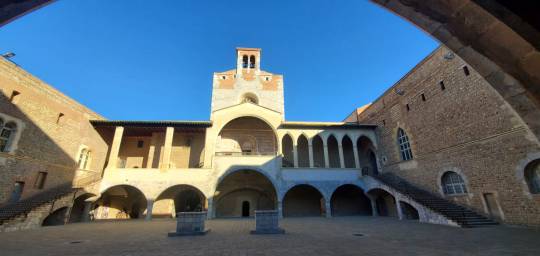
El palau dels reis de Mallorca fou construït pel rei Jaume II a Perpinyà a partir del 1276, quan asssumí la corona del nou regne instituït deu anys abans per Jaume I el Conqueridor.
Es tractava del principal centre de poder dels territoris que el nou regne reunia: les Illes Balears, els comtats del Rosselló i la Cerdanya, el senyoriu de Montpeller, heretat per Jaume I de la seva mare, Maria, i d’altres feus al nord dels Pirineus.
Al palau, que és protegit per poderoses muralles i un fossar, es van bastir jardins i diverses capelles, que foren consagrades en acabar-se el complexe cap al 1309, encara essent rei Jaume II de Mallorca, que va patir durant el seu regnat la pèrdua temporal dels seus territoris insulars a mans del seu oncle, Alfons III d’Aragó.
Recuperades les illes vers el 1291, en morir el rei aragonès i per una decisió arbitral del papat, Jaume II va continuar bastint el regne tant a Mallorca com al Rosselló. Va poder disfrutar del conjunt de la fortalesa acabada apenes dos anys, doncs va morir el 1311 i el va succeïr el seu fill Sanç.
Sanç I de Mallorca, que va ser rei en renunciar el seu germà gran a la corona per fer-se frare franciscà, va continuar la obra del seu pare i va iniciar el bastiment d’un poder naval basat en la insularitat de la major part del seu regne. Va xocar amb les institucions de Ciutat de Mallorca.
Mort sense fills el 1324, el succeí el seu nebot com a Jaume III, que de seguida va assumir el vassallatge respecte al seu parent, el rei Pere IV d’Aragó, al qual va donar suport en la conquesta de Sardenya i en la guerra amb la República de Gènova.
La Corona d’Aragó va voler annexionar-se de nou el regne. Pere IV va fer-se amb les illes el 1343 i amb els comtats transpirinaics el 1344. Jaume va cedir la resta de baronies al rei de França a canvi de suport per recuperar el seu reialme.
El somni reial mallorquí va acabar a la batalla de Llucmajor, el 1349, certificat amb la mort del Jaume III el mateix any. El seu fill va reclamar la corona de l’efímer regne amb el nom de Jaume IV, però no va tenir èxit i els seus territoris es van reincorporar a la Corona d’Aragó.
Després d’això, el palau dels reis de Mallorca de Perpinyà perdé protagonisme i només va ser una residència reial quan els monarques catalanoaragonesos visitaven els seus territoris de l’actual Catalunya Nord.
Les guerres entre les corones aragonesa i francesa al llarg del segle XV va fer que el palau-fortalesa centralitzés la defensa del territori. Entre 1538 y 1587, els reis Carle I i Felip II d’Espanya engrandiren el recinte amb les muralles de maons.
El Tractat dels Pirineus (1659), pel qual Espanya cedí els antics comtats catalans de Rosselló, Cerdanya, Vallespir i Conflent a França, va donar pas a la ocupació francesa. Durant aquesta, l’enginyer militar Sébastien Le Prestre, primer senyor i després marquès de Vauban, va reforçar el sistema defensiu del que encara avui és un recinte parcialment d’ús militar.
1 note
·
View note
Text
Die Festungsanlage Vauban Saarlouis ist eine alte Festungsstadt in Deutschland, die aufgrund ihrer Festungsanlage Vauban ein beliebtes Reiseziel ist. Die Festungsanlage Vauban ist ein faszinierender Ort, der ein Zeugnis der Vergangenheit ist. Sie wurde im Jahr 1680 von dem französischen Militäringenieur Sébastien Le Prestre de Vauban erbaut und ist eine der größten und am besten erhaltenen Festungsanlagen in Europa. Die Festungsanlage Vauban ist ein einzigartiges Erbe der Geschichte, das sich über mehrere Kilometer erstreckt. Besucher können die Festungsanlage erkunden und die vielen Türme, Bastionen, Gärten und anderen interessanten Sehenswürdigkeiten sehen. Auf dem Gelände befindet sich auch ein Museum, das mehr über die Festungsanlage und ihre Geschichte erzählt. Der Saarlouiser Marktplatz Der Saarlouiser Marktplatz ist ein weiterer Ort, den man in Saarlouis besuchen muss. Der Marktplatz befindet sich im Herzen der Stadt und ist ein beliebter Treffpunkt für Einheimische und Besucher. Hier findet man eine Vielzahl von Geschäften, Cafés und Restaurants, die alle zu einem Besuch einladen. Der Marktplatz ist auch ein großartiger Ort, um die Atmosphäre von Saarlouis zu genießen. Hier kann man die lokalen Köstlichkeiten probieren oder einfach nur die vielen bunten Farben und die vielen verschiedenen Kulturen beobachten. Der Saarlouiser Stadtgarten Der Saarlouiser Stadtgarten ist ein weiterer Ort, den man in Saarlouis besuchen muss. Der Stadtgarten ist ein schöner Park, der eine Vielzahl von Pflanzen und Bäumen beherbergt. Hier kann man sich entspannen und die Natur genießen. Der Stadtgarten bietet auch eine Vielzahl von Aktivitäten wie Wandern, Radfahren, Bootfahren und vieles mehr. Es gibt auch ein Café und ein Restaurant, in dem man sich nach einem anstrengenden Tag erholen kann. Der Saarlouiser Dom Der Saarlouiser Dom ist eine der ältesten Kirchen in Saarlouis. Der Dom wurde im Jahr 1260 erbaut und ist ein wunderschönes Gebäude, das ein wichtiges Zeugnis der Geschichte der Stadt ist. Der Dom ist ein Ort der Ruhe und des Friedens und bietet eine wunderschöne Aussicht auf die Stadt. Besucher können den Dom besichtigen und sich auch an den regelmäßigen Gottesdiensten beteiligen. Der Saarlouiser Stadtwall Der Saarlouiser Stadtwall ist ein weiteres beeindruckendes Bauwerk in Saarlouis. Der Stadtwall wurde im 16. Jahrhundert erbaut und ist ein wichtiges Zeugnis der Geschichte der Stadt. Der Stadtwall ist mehrere Kilometer lang und ist ein beliebtes Ziel für Besucher. Der Stadtwall bietet eine wunderschöne Aussicht auf die Stadt und ist ein beliebtes Ziel für Spaziergänge. Er ist auch ein beliebter Ort, um sich zu entspannen und die Aussicht auf die Stadt zu genießen. Die Saarlouiser Kulturmeile Die Saarlouiser Kulturmeile ist ein weiterer Ort, den man in Saarlouis besuchen muss. Die Kulturmeile ist ein beliebter Treffpunkt für Künstler, Musiker, Schriftsteller und andere Kreative. Hier findet man eine Vielzahl von Galerien, Museen, Kinos, Theatern und vieles mehr. Die Kulturmeile ist ein Ort, an dem man die Kunst und Kultur von Saarlouis erleben kann. Hier kann man die Arbeiten der lokalen Künstler bewundern und an Kulturveranstaltungen teilnehmen. Der Saarlouiser Zoo Der Saarlouiser Zoo ist ein weiterer Ort, den man in Saarlouis besuchen muss. Der Zoo beherbergt eine Vielzahl von Tieren, die man beobachten kann. Es gibt auch viele Shows und Veranstaltungen, die man besuchen kann. Der Zoo ist ein beliebtes Ziel für Familien, die einen Tag voller Spaß und Abenteuer erleben möchten. Hier kann man die Tiere beobachten und auch an den verschiedenen Shows und Veranstaltungen teilnehmen. Der Saarlouiser Fluss Der Saarlouiser Fluss ist ein weiterer Ort, den man in Saarlouis besuchen muss. Der Fluss ist ein beliebtes Ziel für Besucher, die die Natur und die Landschaft von Saarlouis erleben möchten. Hier kann man Bootfahren, Schwimmen, Angeln und vieles mehr. Der Saarlouiser Fluss ist ein wunderschöner Ort, an dem man die Natur und die Landschaft von Saarlouis erleben kann.
Hier kann man die schöne Aussicht auf die Stadt genießen und auch an den vielen Aktivitäten teilnehmen. Saarlouis ist ein wunderschöner Ort, der viele beeindruckende Sehenswürdigkeiten zu bieten hat. Ob man die Festungsanlage Vauban erkundet, den Saarlouiser Marktplatz besucht, den Saarlouiser Stadtgarten erkundet, den Saarlouiser Dom besichtigt, den Saarlouiser Stadtwall erkundet, die Saarlouiser Kulturmeile besucht oder den Saarlouiser Fluss erkundet, es gibt viele Möglichkeiten, Saarlouis zu entdecken. Jeder Ort hat seinen eigenen Charme und bietet ein einzigartiges Erlebnis. Saarlouis ist ein Ort, den man gesehen haben muss.
0 notes
Photo

Sébastien Le Prestre de Vauban, Saarlouis, Germany, 1680 VS Wilson Alwyn Bentley, Snow Crystals | The Bentley Collection, The Schwerdtfeger Library, University of Wisconsin-Madison, 1885-1931
#Sébastien Le Prestre de Vauban#vauban#saarlouis#germany#wilson bentley#snow#snowcrystal#snowflakes#snow crystals#snow flake#bentley collection#Schwerdtfeger Library#architecture#plan#urbanism#urban plan#fort#fortification
30 notes
·
View notes
Text
Citadelle de Belfort - The reputedly impregnable fortifications in Belfort
Citadelle de Belfort – The reputedly impregnable fortifications in Belfort
Built in 1687 according to plans by French military engineer Sébastien Le Prestre de Vauban. It played an important role especially in 1870-71 during the siege of Belfort, one of the last great battles of the Franco-Prussian War. The citadel was built on a rocky promontory east of the old town with a view of the city. In addition to the fortress and the moats, on the western flank of the barracks…

View On WordPress
#citadel#Citadelle de Belfort#Fort#Frédéric Auguste Bartholdi#Lion of Belfort#Sébastien Le Prestre de Vauban
0 notes
Text
Beste Kultur- und Reisefilme im TV
Beste Kultur- und Reisefilme im TV
Wilhelmstein im Steinhuder MeerFestungsstadt Almeida im Centro de Portugal Aktuell versorgt Durchstreifen & Erleben Abonnenten regelmäßig mit den besten Kultur- und Reisefilmen im TV-Programm. Im Zentrum stehen beliebte Ziele in Europa. Nur Deutschland, Frankreich, Österreich und Spanien sind ab heute vertreten. Zu erklären ist das minimalistische Angebot wie schon zuvor mit dem breiten…
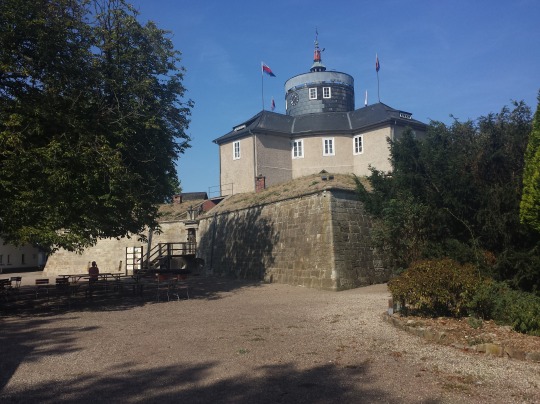
View On WordPress
#Almeida Portugal#übernachtung auf einer burg#bretagne reise#Burg Vischering#Centro de Portugal#Festungsstadt Almeida#Ludwig XIV:#Reise Elsass#Sébastien Le Prestre#Seigneur de Vauban#Steinhuder Meer#straßburg reise#Urlaub an der Schlei#Urlaub andalusien#wanderurlaub#Wiener Kongress#Wilhelmstein
0 notes
Photo
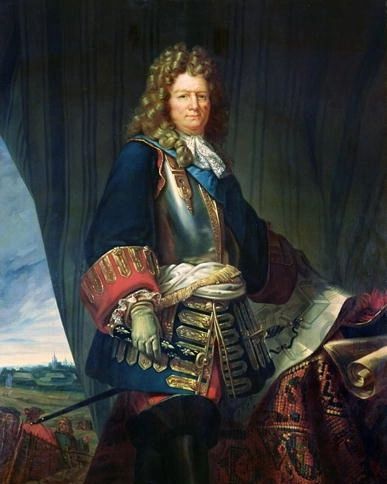
THÈME DE "LA LITTÉRATURE CLASSIQUE EN BREF". #culturejaiflash LA DIME ROYALE DE VAUBAN La Dîme royale est un ouvrage écrit par Sébastien Le Prestre de Vauban de 1695 à 1697 en collaboration avec son secrétaire, l'abbé Vincent Ragot de Beaumont et publié en 1707. En 1695, Vauban compose un Projet de Capitation. Il s'agit d'un impôt exceptionnel et momentané, tant que la guerre durera, qui n'est pas substitué aux impôts existants, mais superposé à eux. Sa nouveauté est une exemption de paiement pour ceux qui n'ont pas les moyens de payer, jointe à la suppression d'exemption des privilégiés... Regardez "G.P. Telemann Trumpet Concertos 4/4" sur YouTube https://youtu.be/E536Pxhf1Mw UNE RÉFORME POUR UNE FRANCE RUINÉE PAR LA GUERRE ET LA FAIM Vauban cite ensuite de Boisguilbert et son ouvrage Détail de la France. Ce dernier a constaté dans le royaume de France, toujours menacé par la famine, que la moitié des terres étaient en friche ou mal cultivées, parce que la taille, calculée très arbitrairement sur l'appréciation des biens, ôte au paysan l'argent dont il devrait disposer pour mettre ses champs en valeur. De plus, le système de douane en place entravait la circulation des richesses et le commerce. L'idée centrale de Boisguilbert, et dont Vauban s'inspire, consiste à remplacer les multiples impôts par deux impôts directs. Louis XIV n'accepta pas la réforme fiscale et remercia Vauban qui retourna sur ses terres Bourguignonnes, entre Auxerre et Avallon. TABLEAU DE VAUBAN Vauban, avec sa cicatrice ronde sur la joue gauche due à un coup de mousquet reçu lors du siège de Douai. Tableau attribué à une école de peinture du xviiie siècle. https://www.facebook.com/groups/2633342570072743/?ref=share_group_link https://www.instagram.com/p/Ch6sqjSsexy/?igshid=NGJjMDIxMWI=
2 notes
·
View notes
Photo

Sébastien Le Prestre de Vauban, Seigneur de Vauban, later Marquis de Vauban (1 May 1633 – 30 March 1707), commonly referred to as Vauban (French: [vobɑ̃]), was a French military engineer who worked under Louis XIV. He is generally considered the greatest engineer of his time, and one of the most important in Western military history.
His principles for fortifications were widely used for nearly 100 years, while aspects of his offensive tactics remained in use until the mid-twentieth century. He viewed civilian infrastructure as closely connected to military effectiveness and worked on many of France's major ports, as well as projects like the Canal de la Bruche, which remain in use today. He founded the Corps royal des ingénieurs militaires, whose curriculum was based on his publications on engineering design, strategy and training.
His economic tract, La Dîme royale, used statistics in support of his arguments, making it a precursor of modern economics. Later destroyed by Royal decree, it contained radical proposals for a more even distribution of the tax burden. His application of rational and scientific methods to problem-solving, whether engineering or social, anticipated an approach common in the Age of Enlightenment.
Perhaps the most enduring aspect of Vauban's legacy was his view of France as a geographical entity. His advocacy of giving up territory for a more coherent and defensible border was unusual for the period; the boundaries of the French state he proposed in the north and east have changed very little in the four centuries since.
https://en.wikipedia.org/wiki/S%C3%A9bastien_Le_Prestre_de_Vauban
10 notes
·
View notes
Photo

Life Can Be A Train Wreck, Ed Buziak
Another 'Vauban' inspired collage (the 27th in my dedicated series based loosely on the fortification designs of Vauban) using Canson ‘Mi-Teintes’ art papers pre-assembled into stripes of various colour combinations then drawn and cut into assorted angles which were overlaid and interlocked on a pre-crayoned sheet of Canson ‘Imagine’ art paper. The design was intentionally disturbing as I had "Life Can Be A Train Wreck" in mind for the title. All my recent artworks using painted or applied elements of carefully drawn angles are loosely based on the works of Maréchal Vauban, or Sébastien Le Prestre de Vauban (1633-1707), who is considered one the of the greatest military engineers of all time. In his life he was responsible for the fortification of over 160 places in France… but his major contribution to warfare was his methods of attack, which revolutionised siege warfare. However, the shapes and angles of his defensive walls surrounding many French towns and seaports have influenced the design of my more recent artworks.
https://www.saatchiart.com/art/Collage-Life-Can-Be-A-Train-Wreck/395193/3458266/view
12 notes
·
View notes
Text
Vauban
There are few artistic renderings of Vauban made during his lifetime. There are so many differences among the numerous works of art made after his death that we cannot really get a precise picture of him. Paintings, drawings and sculptures (e.g. by Rigaud, Desrochers, Bridan, Guyot or Larivière) represent Vauban as a middle-aged man of average height, rather muscular and vigorous with a scar on his left cheek caused by a wound from the siege of Douai in 1667. But beyond the heroic portrait rendered in classic style, it is possible to get an idea of Vauban's personality through his writings, his letters, and his achievements and through contemporary witnesses.

On the whole, Vauban appears to have been a sympathetic and interesting person. A dynamic, vigorous and otherwise healthy man, he suffered all his life from asthma and bronchitis. His tireless vitality and his prodigious activity amazed his peers. He brought a sense of duty to the point of selflessness. Vauban was indeed entirely devoted to Louis XIV, whom he identified with France. The absolute and sacred power of the king was the only thing that he never questioned. He gave up his private life to his duty and, until his last breath, served with total loyalty and unselfishness. He showed his superiors a respectful but not servile devotedness, but he never fawned and never hesitated to express his ideas, criticism and anger with plain speech, and sometimes with stubborness. As a man of action he felt more at ease on the battlefield, in a muddy trench or on a construction site than at Louis XIV's sophisticated court of Versailles. With his collaborators and subordinates, he was demanding and severe but at the same time benevolent and grateful. He was not afraid to listen and adopt other people's ideas if they were good. One of his great strengths was to be able to choose good collaborators. He was capable of making right decisions quickly, and carried them out rapidly. He was not reluctant to deal with secondary details but always kept the big picture in mind and a remarkable clearness of mind on conception and execution.
His eight wounds testifiy to his audacity, gallantry and physical courage in war. Even when he had become a senior officer, Vauban took many risks by commanding on the front line. Repeatedly Louis XIV and Louvois forbade him to enter the siege trenches. As a commanding officer he always tried to spare the blood of his soldiers and the lives of civilians. Vauban was a man-at-arms who did not like violence. He wrote: "The father of war is greed, its mother is ambition, and its relatives are all passions which lead us to evil." Vauban owed his astonishing career and tremendous destiny to his exceptional talent and skill, it is true, but also to his phenomenal luck. Given the tradition and standards of the time, and given his social background, he was destined to be an officer who would probably have reached the rank of colonel. His fortune came from being the right man at the right time, whose talent was recognized by powerful persons, and who attracted their attention in favorable circumstances. His competence, honesty, huge knowledge and experience were successively recognized and rewarded by d'Arcenay, Mazarin, Clerville, La Ferté-Senectère, Condé, Louvois, and ultimately by Louis XIV himself. Although he knew that his advancement was the result of his own merit and although he was fully aware of his personal value, Vauban remained for a large part of his life a modest, quiet, sensitive and simple man. As he grew older, however, he became pretentious, more ambitious, less patient, more authoritarian and more vain. He frequently gave his opinion on subjects outside of his own field of competences and got frustrated and angry when no attention was paid to his remarks, and no concern was given to his proposals. He wrote more and more about such matters as religion, politics and taxes, and irritated his superiors and the king himself. The end of his life was marked by bitterness, sadness and disappointment.
In his numerous writings Vauban appears as an intelligent man, caring for people and curious about the world around him. His work is dominated by rectitude, efficiency and reason. His actions seem to reveal a man of heart, proud but tolerant, courageous and charitable towards humble, poor and miserable people. He once wrote: "Fortune made me born one of the poorest French gentleman, but as a reward it gave me a sincere heart." Originating from the low country nobility, he knew what relative financial want was and therefore was an excellent and thrifty- almost bourgeois- manager of his personal patrimony. When he died he left in inheritance the estates and manors of Bazoches, Pierre-Perthuis, Vauban, Neuffontaines, Domecy and Epiry. Of course, Vauban's social standing and wealth give rise to several questions: Was he really such "a good guy" ? How did the privileged landlord Vauban treat his own peasants and servants ? Was he as generous in the practice of daily life as he was when putting humanist theories on paper ? As no study exists about his own private behavior, these questions remain unanswered.
According to his contemporaries, Vauban seemed to his intimates to be a joyful companion, fond of life and keen on pleasures, though not in excess. He did not dislike the company of women, and admitted to having many mistresses and a few illegitimate children. This was not shocking, neither for the manners nor for the morality of his century.
At a time when patronage triumphed, Vauban was tightly attached to Louvois's lobbying clan, and strongly defended his family's interest. But he only helped friends and relatives in the strict measure of their merit. Vauban was a close friend to Marshal Nicolas Catinat, and he kept friendly relationships with his son-in-law Mesgrigny, drama writer Jean Racine, archbishop and writer Fénelon, and director of fortifications Le Peletier de Souzy.
Jean-Denis GG Lepage- Vauban and the French Military under Louis XIV: An Illustrated History of Fortifications and Strategies
#xvii#jean-denis g.g. lepage#vauban and the french military under louis xiv#sébastien le prestre de vauban
3 notes
·
View notes
Photo

Manière de Fortifier de Mr. de Vauban (Amsterdam, 1689), Sébastien Le Prestre de Vauban (1633-1707).
Vauban at first recorded his system of fortification informally, but by the late 17th century it had been published, accompanied by plates illustrating the proper manner of constructing a fortress. During his career Vauban rebuilt some sixty fortresses, providing France with a defensive shield on its vulnerable frontiers. In his other writings Vauban counseled how to besiege and capture the same sort of fortification.
Source: exhibit The Geometry of War (University of Michigan)
#context#vauban#sébastien le prestre de vauban#17th century#history#military history#1680s#1690s#engineer#military engineering#military engineer#histoire#books#old books#1700s#european history#french history
0 notes
Text
Come sono fatti certi libri, 4 / "Le amicizie pericolose", di Choderlos de Laclos
Come sono fatti certi libri, 4 / “Le amicizie pericolose”, di Choderlos de Laclos

di C. P. [In questa rubrica vorrei pubblicare descrizioni, anche sommarie, di libri che – al di là della storia che raccontano o del tipo di scrittura – presentano una “forma” un po’ particolare, o magari bizzarra. Che cosa io intenda qui per “forma” risulterà, credo, evidente. Se altri volessero contribuire, si facciano vivi in privato ([email protected]).] L’autore delle Amicizie pericolose…
View On WordPress
#Antoine Nompar de Caumont#Choderlos de Laclos#Donatien-Alphonse-François de Sade#Gilbert du Motier de La Fayette#Louis Marc Antoine di Noailles#Napoleone Bonaparte#Restif de la Bretonne#Samuel Richardson#Sébastien Le Prestre de Vauban#Stephen Frears
0 notes
Text
Welterbe (auf)gespürt und (er)fahren - F - Festungsanlagen von Vauban
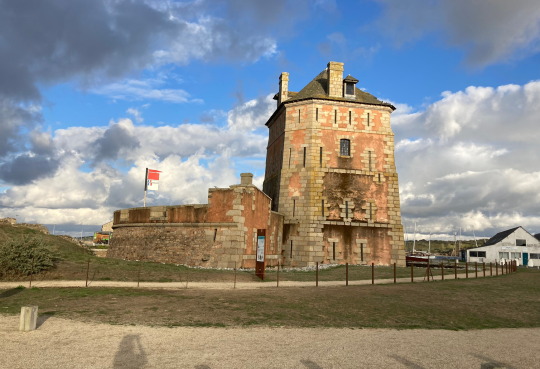
Militärische Befestigungsanlagen habe ich auf meiner Reise zu den Welterben schon an einigen Stellen besucht, mir fallen da sofort Venedig, Helsinki oder Luxemburg ein. Auch an den Grenzen Frankreichs besuche ich einige Arbeiten des Bauingenieurs Vauban, mein erster Stopp führt mich nach Camaret-sur-Mer. Sébastien Le Prestre de Vauban (1633-1707) war ein Militäringenieur von König Ludwig XIV. Seine Projekte stehen seit 2008 auf der UNESCO-Welterbeliste und veranschaulichen eine bedeutende Periode der Militärgeschichte. Vauban entwarf rationelle, an die vorgegebene Landschaft angepasste Befestigungssysteme und verband darin militärische Strategie, Architektur und Konstruktion, Bauingenieurwesen sowie wirtschaftliche und soziale Organisation.

Zum Welterbe gehören 12 der schönsten Beispiele seiner Arbeit, wie Städte, die von Vauban von Grund auf neu bauen ließ, Zitadellen, städtische Bastionsmauern und -Türme, Berg- und Seefestungen, eine Bergbatterie und zwei Bergkommunikationsstrukturen. Karte - https://fr.wikipedia.org/wiki/Fichier:Carte_des_sites_majeurs_de_Vauban.svg Diese Stätten verkörpern den Höhepunkt der klassischen Befestigungsanlagen und sind typisch für die westliche Militärarchitektur. Bis Mitte des 19. Jahrhunderts spielte Vauban eine wichtige Rolle in der Geschichte der Festungsanlagen in Europa und seine Theorien zur strategischen Militärarchitektur wurden von Amerika bis in den Fernen Osten angewendet. Hier geht zum Einführungsvideo. Auf die erste Befestigungsanlage, die allerdings nicht zu den Welterbestätten gehört, stoße ich eigentlich eher durch Zufall in Nord-Pas-de-Calais in der Stadt Bergues An der französischen Ostgrenze befindet sich eine Reihe von Festungsstädten, Bergues ist eine davon. In der Stadt spielt der Film - Willkommen bei den Sch'tis - und ich möchte mir hier natürlich den Belfried anschauen. Ich parke neben der recht beachtlichen Stadtmauer mit dem Wassergraben und betrete das Zentrum durch die imposante Porte de Cassel aus dem Jahr 1752.


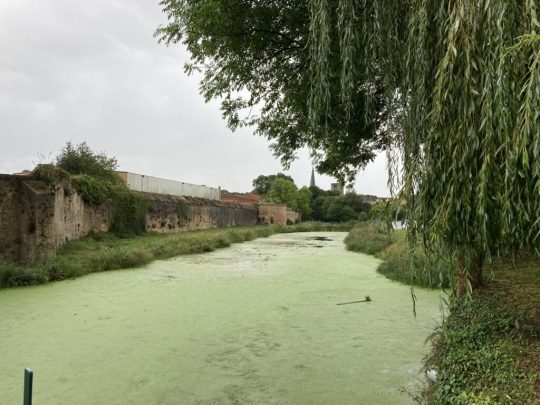

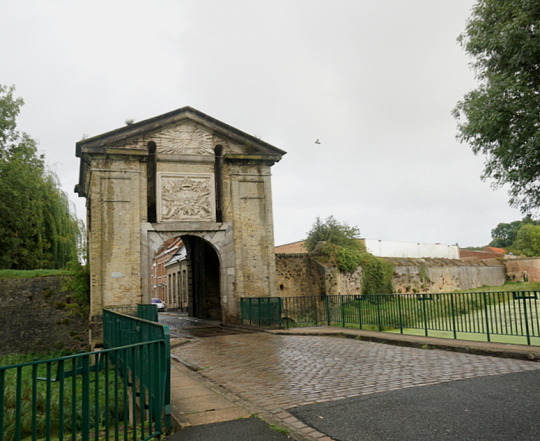
Camaret-sur-Mer Nach Camaret-sur-Mer komme ich ganz gezielt, um mir den dortigen Vauban-Turm anzuschauen. Die Sonne scheint und ich fahre zuerst zu den felsigen Klippen mit dem Blick auf die Westspitze Frankreichs, der Pointe du Raz.

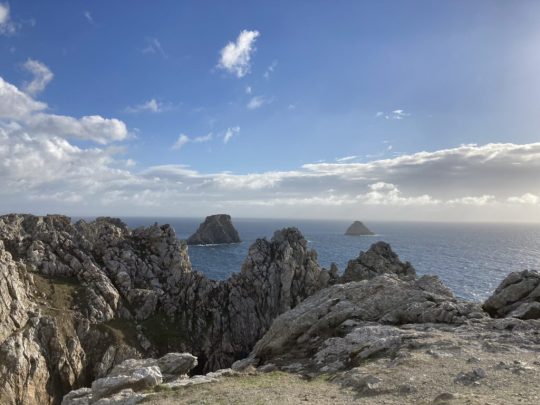

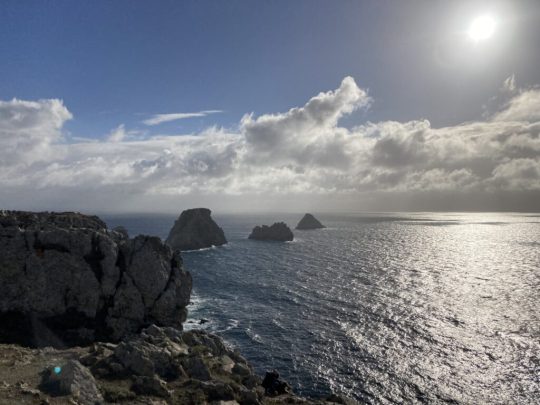

Ich bewege mich hier auf historischem Boden. Die Landzunge war heiß umkämpft, daran erinnern die Bunker an der Pointe de Pen Hir.

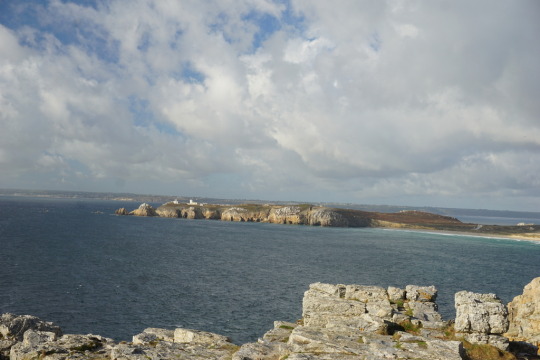


Camaret hält auch noch weitere Sehenswürdigkeiten aus früheren Zeitaltern für mich bereit. Unweit der Spitze steht ein bemerkenswerter Steinkreis, die Steinreihen von Lagatjar.
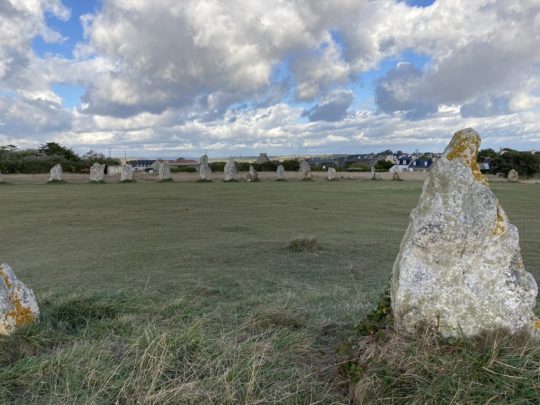
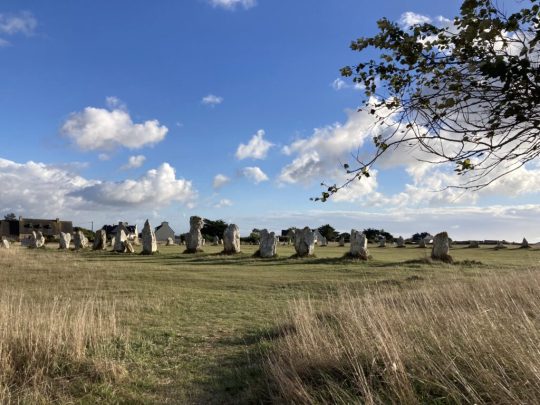
Der Vauban-Turm erhebt sich imposant neben einer kleinen Kirche und hinter Schiffsfriedhof am Hafen des Ortes und macht heute seinem Namen - Goldener Turm - den ihm Vauban gegeben hatte, alle Ehre (Link zum Artikel).

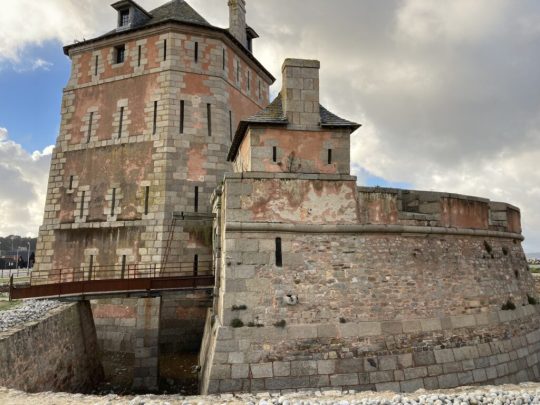


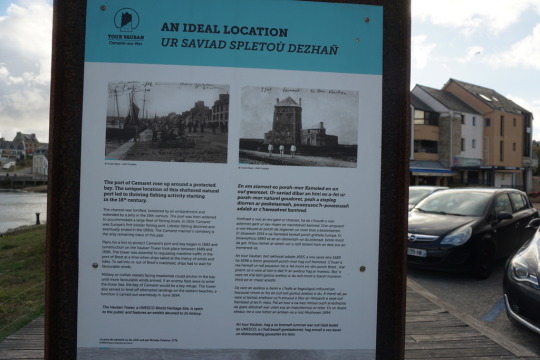
Leider ist der Turm geschlossen, aber die kleine Schiffskirche lädt mich zum Besuch.
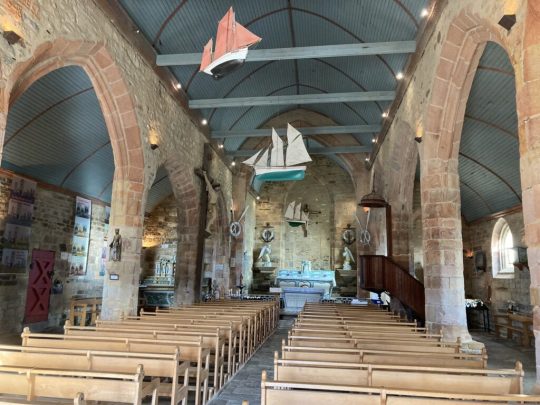

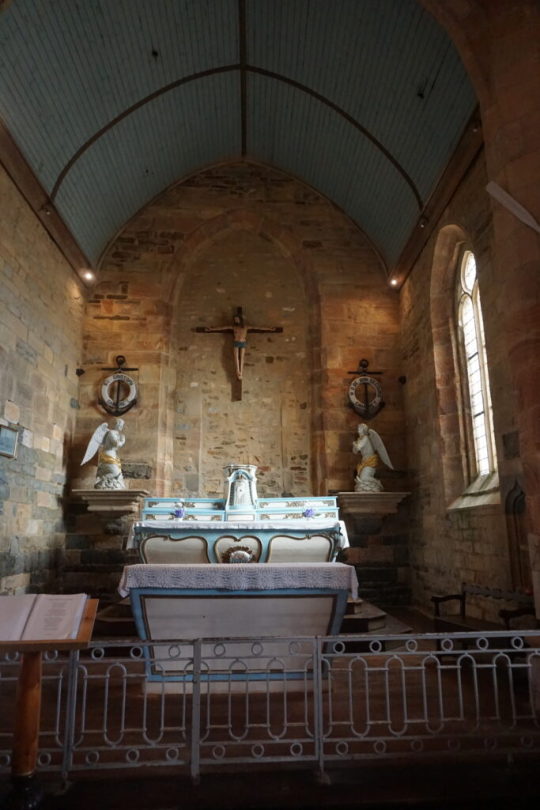


Camaret sur-Mer ist eine der Überraschungen auf meiner Tour. Was als kleiner Umweg in Sachen Vauban gedacht war, erweist sich als Volltreffer. Diese Halbinsel ist so geschichtsträchtig wie fotogen. Besançon Fast am Ende meiner Rundreise besuche ich die Stadt Besançon, in der sich Vaubans schönste Zitadelle befindet.
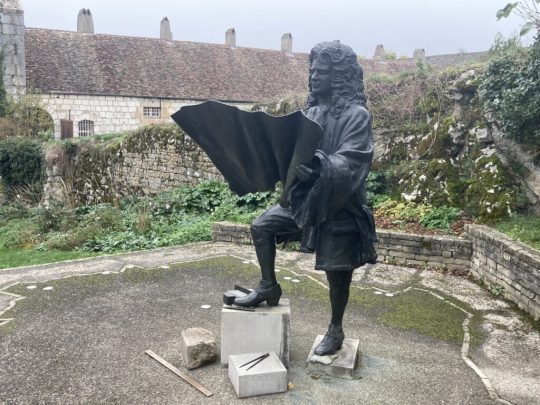
Besançon liegt im Tal zwischen zwei Bergen und ich möchte die Zitadelle eigentlich vom Fort de Chaudanne aus fotografieren, was leider ein dichter Nebel verhindert. Deshalb fahre ich durch schmalste steile Gassen im historischen Zentrum vorbei an der Kathedrale zur Zitadelle hinauf und stehe wenig später vor dem Denkmal für den großen Baumeister.






Das historische Stadtzentrum wäre zweifellos einen Besuch wert, doch schlechtes Wetter und fehlende Haltemöglichkeiten zwingen mich schneller als geplant den interessanten Ort zu verlassen. Dafür gibt es einen Stopp im Herbstwald am Fluss.

Resümee
Ich habe auf meiner Rundfahrt durch Frankreich Vertreter der Festungsanlagen besucht, die das Welterbe um den Militärbaumeister Sébastien Le Prestre de Vauban repräsentieren. Zum Glück sind sie aus heutigem Blick eher romantisch und hoffentlich nie mehr notwendig. Interessant war der Besuch allemal und besonders in Verbindung mit den Orten, in denen sich die Bauwerke befinden. Es lohnt sich auf jeden Fall, sich die nähere oder auch weitere Umgebung anzuschauen und Orte zu besuchen, an denen man ohne die Welterbestätte vielleicht vorbei gefahren wäre. Dobbys Einrichtung und Ausstattung hat sich auch im Novemberwetter bewährt. Alle Details zum Ausbau meines Minicampers findet ihr hier: https://5-reisende.de/2022/07/29/55-000-km-on-the-road-vom-nordkapp-bis-sizilien-dobby-insights/. Meine Übernachtungsplätze habe ich wieder auf park4night gesucht und unter 5Reisende bewertet. Die App Toiletten Scout hat sich größtenteils nicht als hilfreich erwiesen. Read the full article
#Abenteuermobil#Abenteuerreise#alleinunterwegs#Alleinreisen#Ausbau#Ausrüstung#Autoreise#Besançon#Besichtigung#Camaret-sur-Mer#Camping#Camping-Mobil#Dacia-Dokker#DIY#Dobby#Erfahrungsbericht#Erkundung#Europa#Frankreich#Hochdach-Kombi#Inspiration#Leichtbau#Minicamper#Parkplatz#Reisebericht#Reisefotografie#Reisetagebuch#Reiseziele#Roadtrip#Rundfahrt
0 notes
Photo










Québec Citadel (No. 2)
The long-awaited impetus
In 1812–1813 the Americans again tried—in vain—to invade the British colonies of Canada. That was enough to spur colonial leaders to build a permanent citadel of stone.
Engineer Elias Walker Durnford drew up the plans, taking inspiration from the work of renowned French engineer Sébastien Le Prestre de Vauban. Work lasted from 1820 to 1831. The result is the citadel that visitors see today.
Home to the Royal 22nd Regiment
In 1871 peace was sealed with the United States, and British troops left the city. The artillery school of the Canadian militia took up residence in the Citadel. Lord Dufferin, Governor General of Canada, made it his official residence and to this day it remains the governor general’s secondary residence after Rideau Hall in Ottawa.
The Royal 22nd Regiment made its home in the Citadel in 1920. The regiment was created on the eve of the First World War in 1914 to encourage French Canadians to enlist. It is the only infantry unit in Canada to be led in French and is proud to have fought in both world wars in Europe and in a number of subsequent conflicts.
A guardian of military heritage
The Royal 22nd Regiment is a guardian of this outstanding military heritage. Its troops pass on certain traditions, such as the changing of the guard in summer, when visitors come to see the regiment parade in full dress: a red tunic and heavy bearskin cap. Meanwhile inside the Citadel a museum displays the weapons, uniforms, and artefacts that bear witness to 300 years of military history in the city.
Source
#Québec Citadel#Citadelle de Québec#architecture#engineering#landmark#tourist attraction#Detail#hauteville#upper town#je me souviens#cannon#flower#nature#blooming#street light#street lamp#Royal 22nd Regiment#guard#rain coat#wall#lawn#tree#summer 2018#vacation#travel#original photography#ravelin
1 note
·
View note
Photo

Sébastien Le Prestre de Vauban, Longwy, France, 1679-1684 VS Wilson Alwyn Bentley, Snow Crystals | The Bentley Collection, The Schwerdtfeger Library, University of Wisconsin-Madison, 1885-1931
#Sébastien Le Prestre de Vauban#vauban#fortification#unesco#france#longwy#world heritage#world heritage site#Wilson Bentley#snow crystal#snow crystals#bentley collection#snow#snow flake#snow flakes#snowflakes#snowflake#hexagon#hexagonal#geometry#modern architecture
31 notes
·
View notes